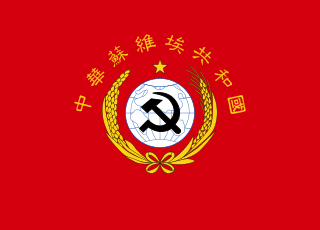Prelude
The planning of the campaign was already in process in mid August 1930, as Chiang Kai-shek had directed He Yingqing, the commander of Wuhan headquarters, to hold a conference at Hankou on how to suppress the communists in Hunan, Hubei and Jiangxi provinces. A decision was made to concentrate on military rather than political strategies, and to launch multiple attacks on the main communist base in Jiangxi Soviet. The plan was temporarily interrupted by the Central Plains War, but when Chiang's victory in this theatre was certain by October 1930, he immediately redeployed his troops in preparation for engaging the communists.

Wuhan is the capital and largest city of the Chinese province of Hubei. It is the most populous city in Central China, with a population of over 10 million, the seventh most populous Chinese city, and one of the nine National Central Cities of China. It lies in the eastern Jianghan Plain, on the middle reaches of the Yangtze River's intersection with the Han river. Arising out of the conglomeration of three cities, Wuchang, Hankou, and Hanyang, Wuhan is known as "China's Thoroughfare" (九省通衢), and holds sub-provincial status.

Hankou(Chinese: t 漢口,s 汉口,p Hànkǒu), formerly romanized as Hankow (Hangkow), was one of the three towns whose merging formed modern-day Wuhan city, the capital of the Hubei province, China. It stands north of the Han and Yangtze Rivers where the Han flows into the Yangtze. Hankou is connected by bridges to its triplet sister towns Hanyang and Wuchang.

Hunan is a landlocked province in Central China. Located in the middle reaches of the Yangtze watershed, it borders the province-level divisions of Hubei to the north, Jiangxi to the east, Guangdong and Guangxi to the south, Guizhou to the west, and Chongqing to the northwest. Its capital and largest city is Changsha, which also abuts the Xiang River. With a population of just over 67 million as of 2014 residing in an area of approximately 210,000 km2 (81,000 sq mi), it is China's 7th most populous province by population and the 10th most extensive province by area.
Nationalist strategy planned for the 1st phase
Chiang Kai-shek appointed the nationalist Jiangxi provincial governor and commander of the 9th Route Army, Lu Diping to organize the nationalist troops for redeployment. On November 2, 1930, Lu Diping mobilized the nationalist troops, totalling 7 divisions and 1 brigade into 3 columns, with reinforcements in the form of Chiang Kai-shek's troops from Hunan. The 19th Route Army departed from Wuhan by October 20, 1930. Lu Diping set a deadline of November 5, 1930, by which time the nationalist troops were to reach their designated deployment areas.

A division is a large military unit or formation, usually consisting of between 10,000 and 20,000 soldiers. Infantry divisions during the World Wars ranged between 8,000 and 30,000 in nominal strength.

A brigade is a major tactical military formation that is typically composed of three to six battalions plus supporting elements. It is roughly equivalent to an enlarged or reinforced regiment. Two or more brigades may constitute a division.
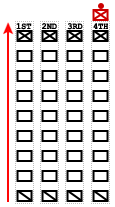
A military column is a formation of soldiers marching together in one or more files in which the file is significantly longer than the width of ranks in the formation. The column formation allowed the unit rapid movement and a very effective charge, and it could quickly form square to resist cavalry attacks, but by its nature only a fraction of its muskets would be able to open fire.
Commanders
- Commander-in-chief: Chiang Kai-shek
- Deputy commander-in-chief: Lu Diping
- Frontline commander-in-chief: Zhang Huizan
- The 1st Column:
- The 2nd Column:
- 50th Division deployed at Western Mountain
- 14th Independent brigade deployed at Jingan
- The 3rd Column:
- 5th Division deployed at Gaoan
- 77th Division deployed at Shanggao
- Strategic reserve:
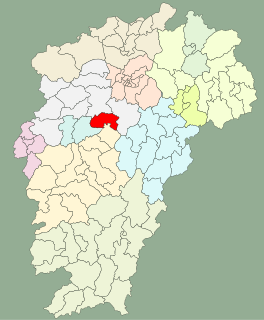
Zhangshu, formerly Qingjiang County (Tsingkiang) (清江县), is a county-level city under the administration of the prefecture-level city of Yichun, in the west-central part of Jiangxi Province. It has an area of 1,291 km2 (498 sq mi) with a population of 536,500. It is the first county of China Top 100 County in Jiangxi Province. The literal translation of the name is Camphor laurel, because traditionally, the city was a major commercial hub for camphor laurel oil. Zhangshu is famous for Chinese medicinal herbs. The China top 10 medicine producer Renhe Group is located there. Officially, it is the Medicine Capital of China, and there are thousands of pharmaceutical companies. Hundreds of thousands of kinds of Chinese herbal medicines are sold by bulk or by retail.
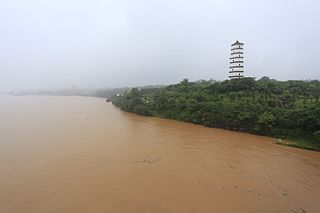
The Gan River travels 885 km (550 mi) north through the western part of Jiangxi before flowing into Lake Poyang and thence into the Yangtze River. The Xiang-Gan uplands separate it from the Xiang River of neighbouring eastern Hunan.

Fengcheng is a county-level city in northern Jiangxi province, People's Republic of China, under the administration of Yichun, located along China National Highway 105 and on the eastern (right) bank of the Gan River about 55 kilometres (34 mi) south of Nanchang, the provincial capital. The literal translation of the name is "Abundance City", due to its importance as a major commercial hub for agricultural products. There are 26 towns and 7 sub-districts comprising a total area of 2,845 square kilometres (1,098 sq mi) and its population is around 1,370,000. The 2005 GDP was more than 9.1 billion RMB.
The nationalists totalled over 100,000 men and planned to crush the communists in the Linjiang region.
Communist strategy planned for the 1st phase
The communists originally disagreed on how to defend Jiangxi Soviet. In numerous debates, many supported the strategy of using the majority of the 40,000 strong Chinese Red Army to strike Nanchang and Jiujiang, in order to force the nationalists onto the defensive, thus abandoning the encirclement campaign. However, the general commissar of the Chinese Red Army, Mao Zedong opposed the idea, arguing that the numerically and technically inferior communist army was in no position to conduct an ambitious invasion into nationalist territory. Instead, it was decided that the communists should fight the enemy within Jiangxi Soviet itself, with the hope that the native population would support them. Mao Zedong finally prevailed and on October 30, 1930, at the Luofang Conference, it was agreed that the Chinese Red Army should cross the Gan River and defeat the enemy on the eastern shore.

Jiujiang, formerly transliterated Kiukiang or Kew Keang, is a prefecture-level city located on the southern shores of the Yangtze River in northwest Jiangxi Province, People's Republic of China. It is the second-largest prefecture-level city in Jiangxi province after the provincial capital Nanchang. Jiujiang literally means "nine rivers".
Commissar is an English transliteration of the Russian комиссáр, which means commissary. In English, the transliteration "commissar" is used to refer specifically to the political commissars of Soviet and Eastern Bloc armies, while administrative officers are called "commissary".

Mao Zedong, also known by his courtesy name Mao Runzhi (毛润之) and the title Chairman Mao as Chairman of the Communist Party of China and paramount leader of the People's Republic of China (PRC), was a Chinese communist revolutionary who led the Communist Party of China (CPC) as Leader of the Communist Party of China from 1943 to his death in 1976 and became the founding father of the PRC when it was established in 1949. In addition, he was also the Chairman of the Central Military Commission from 1954 to 1976. Although he was only formally the head of state until 1959, first as Chairman of the Central People's Government and then as Chairman of the People's Republic of China and was succeeded as head of state by Liu Shaoqi, his control over the party and military made him the de facto leader of the PRC from 1949 to 1976 and the paramount leader of the country's first generation of leadership. His theories, military strategies, and political policies are collectively known as Maoism or Mao Zedong Thought within the PRC, an ideology that remains a part of the Constitution of the People's Republic of China, despite dramatic changes to government policy and ideological orientation after his death.
First phase
Zhu De, the commander-in-chief of the Chinese Red Army, led the 3rd Legion, together with Mao. The 4th Army and the 12th Army of the 1st Legion crossed the Gan River, moving eastward to Xingan, Eternal Abundance, Chongren, and Yihuang, allowing the nationalists to occupy Qingjiang, Xingquan, Yellow Earth Street, Luofang, Xinyu, and Fenyi by early November 1930. Only the 3rd Army of the Chinese Red Army remained in the former communist region to harass the enemy, using guerrilla warfare, while Mao and Zhu De moved their troops toward Zhangshu and Linchuan. Fearing Zhangshu and Linchuan would be lost to the communists, Lu Diping ordered the 3rd Column to continue the attack on the western shore of Gan River, while the 1st and the 2nd Columns crossed the Gan River in pursuit of the major communist force.
After crossing the Gan, the nationalists succeeded in taking Xingquan, Chongren, Southern Town, Southern Abundance, Jishui, Lukou, Oil Field, Donggu and Dragon Hill by mid November 1930. From November 18–20, the nationalists took Ji'an, Jishui, Eternal Abundance, Yuean, Yihuang and Southern Town. By early December, the nationalist force was overstretched and halted their offensives to regroup and re-supply. Meanwhile, the communists planned their next move and also regrouped and re-supplied, first at Yellow Slope, Little Cloth and Luokou, and then moved to Pingtian, Firewood Gathering Hill, and Anfuyu by mid December. At the same time, the 20th Army of the Chinese Red Army acted as decoy in the Rich Field, Donggu and Dragon Hill regions to distract the enemy. A Communist counter-attack defeated the Nationalist force and drove them back. A stalemate ensued, with both sides using this period to plan and prepare for the next phase.
Kuomintang strategy planned for the second phase
Chiang Kai-shek reached Nanchang in early December 1930. He took the command and ordered the nationalist forces to attack Donggu in mid December. More nationalist troops were mobilized, with the 19th Route Army from Wuhan joining the battle, and the 49th Division, 56th Division and 2nd Independent Brigade attacking from Fujian. The nationalist forces by then had been boosted to a total of 11 divisions and two brigades, totalling more than 100,000 men. Lu Diping was named as Chiang's deputy, while Zhang Huizan, the commander of the 18th Division, was promoted to front line commander-in-chief. The Kuomintang troops slowly began their push towards their objectives.
Order of battle (nationalists)
- 77th Division attacking Anfu from Ji'an
- 49th Division and the 2nd Independent Brigade attacking Ruijin, Huichang
- 34th brigade of the 12th Division defending Ganzhou
- The 6th Route Army:
- 8th Division attacking Guangchan, Ningdu, Yudu from Yellow Slope and Southern Abundance
- 24th Division attacking Dongshao, Luokou, and Ningdu from Chinese Alligator Lake
- 56th Division attacking Stone City from Jianning
- The 9th Route Army:
- 5th Division attacking Rich Field, Donggu from Ji'an
- 18th Division attacking Ancient County, White Sand and Donggu from Eternal Abundance
- 50th Division attacking Shaoxie, Tengtian, Dragon Hill and Donggu from Yuean
- The 19th Route Army:
- 60th Division attacking Wanan from Pingxiang, Jiangxi
- 61st Division attacking Taihe from Pingxiang, Jiangxi
Communist strategy planned for the 2nd phase
The communists held a conference at Yellow Slope of Ningdu county in mid December 1930 to discuss their next move. Because of the inferiority in equipment suffered by the communists, Mao decided to concentrate his troops together, hoping to outnumber opposing forces during engagements. Smaller local communist forces would take advantage of the landscape to engage in guerilla warfare, in order to slow down enemy units and prevent them from linking up and reinforcing. Mao's idea was accepted, and the 35th Division of the 12th Army of the Chinese Red Army was sent to the Yue Creek region northeast of Xingguo county to distract the enemy, while the main force was concentrated at Yellow Slope and Matian in preparation for the coming battle.
Second phase
The stalemate ended on December 16, 1930, when the nationalists began the 2nd phase of their offensive. The 5th Division (later renamed the 28th Division) and the 18th Division reached Donggu on December 19 and December 20 respectively. However, heavy fog and poor communication prevented adequate coordination between the nationalist forces and the divisions mistook one another for the enemy, with both using artillery against the other. It was not until December 21 when the fog dissipated that the nationalists realized their mistakes, and by this time both sides had suffered hundreds of casualties.
From December 24–28, the communist forces managed to halt most of the nationalist advance:
- The nationalist 50th Division was stopped at Zhaoxie
- The nationalist 60th Division was stopped at Wangan
- The nationalist 61st Division was stopped at Taihe
- The nationalist 24th Division was stopped at Caotaigang
- The nationalist 8th Division was stopped at New Abundance
- The nationalist 28th Division (renamed 5th Division) was stopped at Triple Craters
- The nationalist 18th Division was stopped at regions near Yinfu and Nanlong
After the initial setback, the nationalist 50th Division continued their push, reaching River Origin, and prepared to take Little Cloth. Realising this, the communists attempted an ambush of the nationalist 50th Division twice, once on December 25, and again two days later. Both attempts failed – the nationalist troops refused to be drawn from their fortified positions on River Origin. The communists were forced to withdraw.
Third phase
On December 28, 1930, Lu Diping ordered the five nationalist divisions within the heart of Jiangxi Soviet to launch a general offensive toward the Yellow Slope, Little Cloth and Matian regions north of Ningdu. The nationalist 18th Division, under the command of Zhang Huizan, pushed toward Dragon Hill from Donggu. The communists attempted to incite local militia to stop the nationalist 50th Division at River Origin, the nationalist 24th Division at Luokou and the nationalist 8th Division at Head Slope, with the main force engaging the 18th Division.
On December 29, as the Chinese Red Army was on its way, the news of the fall of Dragon Hill to the nationalist 18th Division reached the communists. They devised a plan to trap the advancing nationalists with a pincer manoeuvre.
Fourth phase
On the morning of December 30, 1930, the 18th Division of the nationalist 9th Route Army began their push toward Five Gates Ridge from Dragon Hill, headed by the 52nd brigade. Around 09:00, the most important battle of the First Counter Encirclement Campaign began at Short Separation, east of Dragon Hill, with elements of the Chinese Red Army firing the first shot.
The first major battle
By noon of December 30, the entire 3rd Legion of the Chinese Red Army was engaged in the battle. Zhang Huizan, the commander of nationalist 18th Division, only devoted two more regiments in support of his 52nd brigade, under the mistaken belief that the enemy forces he had encountered were merely guerillas. By 15:00, Zhang Huizan was leading the charge of four regiments to clear the communist resistance, but was driven back. Taking advantage of this, the 4th Army and part of the 3rd Legion of the Chinese Red Army moved to cut off the nationalist 18th Division from Donggu and Yinfu, attacking Dragon Hill from behind. The majority of the 3rd Legion of the Chinese Red Army took Shanggu, cutting off the escape route of the nationalist 18th Division at Dragon Hill, and preventing any nationalist reinforcement from the north-west.
Realising they were trapped, morale amongst the nationalist ranks plummeted as they attempted an escape. By 16:00, the encirclement of the nationalist 18th Division was complete and the nationalist attempt to escape toward the north-west had been beaten back. The nationalist army quickly became disorganised, and by this point Zhang Huizan had insufficient control of his forces to arrange an orderly retreat or muster any counter-attack. He was eventually taken prisoner by the communist forces. By 18:00 the battle was over, the entire nationalist division having been wiped out.
Consequences
The complete destruction of the 18th Division of the nationalist 9th Route Army marked the immediate end of the nationalist assaults. The five nationalist divisions deep inside Jiangxi Soviet immediately started to retreat towards nationalist positions.
The Campaign of the North China Plain Pocket, also called the Breakout on the Central Plains by the Communist Party of China, was a series of battles fought between the nationalists and the communists during the Chinese Civil War, resulting in a successful communist breakout from the nationalist encirclement. The campaign marked the beginning of the full-scale civil war fought between the communists and the nationalists in the post-World War II era.
Datong-Jining Campaign (大同集宁战役) was a series of battles fought between the nationalists and the communists mainly in northern Shanxi and the surrounding regions during the Chinese Civil War in the post-World War II era. The main battlefield was centered on two cities, Datong and Jining.

Wang Yaowu was a high-ranking KMT general and the Governor of Shandong Province who successfully fought against both the Imperial Japanese Army and the Chinese Communists. In September 1948 Communist forces launched the Battle of Jinan and Wang was captured and held as a prisoner of war until his pardon in 1959. During the Cultural Revolution he came under attack by the Red Guards for being a former nationalist commander and died of a heart attack in 1968.
The First Encirclement Campaign against the Shaanxi-Gansu Soviet was an encirclement campaign launched by the Chinese Nationalist Government that was intended to destroy the communist Shaanxi-Gansu Soviet and its Chinese Red Army in the local region. It was responded by the Communists' First Counter-Encirclement Campaign at Shaanxi-Gansu Soviet, also called by the communists as the First Counter-Encirclement Campaign at Shaanxi-Gansu Revolutionary Base, in which the local Chinese Red Army successfully defended their soviet republic in Shaanxi and Gansu provinces against the Nationalist attacks from March 1934 to 26 August 1934.
The First Encirclement Campaign against the Hubei-Henan-Shaanxi Soviet was a campaign launched by the Chinese Nationalist Government intended to destroy Communist Party of China's Hubei-Henan-Shaanxi Soviet and its local Red Army. It was met by the Communists' First Counter-Encirclement Campaign at Hubei-Henan-Shaanxi Soviet, also called by the communists the First Counter-Encirclement Campaign against Hubei-Henan-Shaanxi Revolutionary Base Area. The Red Army successfully defended their border region territory against the Government attacks from January to February 5, 1935.
The Second Encirclement Campaign against Hubei-Henan-Shaanxi Soviet was a campaign launched by the Chinese Nationalist Government that was intended to destroy the communist Hubei-Henan-Shaanxi Soviet and its local Red Army. It was met with the Communists' Second Counter-Encirclement Campaign at Hubei-Henan-Shaanxi Soviet. The local Red Army successfully defended their territory in the tri-provincial border region from February 1935 to April 18, 1935.
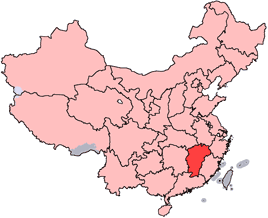
The Second Encirclement Campaignagainst Jiangxi Soviet was a series of battles launched by the Chinese Nationalist Government in the hope of encircling and destroying the Jiangxi Soviet after the previous campaign had failed. The Red Army repelled the encirclement by launching their Second Counter-Encirclement Campaign, also called by the communists as the Second Counter-Encirclement Campaign at Central Revolutionary Base, in which the local Chinese Red Army successfully defended the Jiangxi Soviet against the Nationalist attacks from April 1, 1931, to May 31, 1931.

The Third Encirclement Campaignagainst Jiangxi Soviet was the third campaign launched by the Chinese Nationalist Government in the hope of destroying the Red Army in Jiangxi. It was launched less than a month after the previous campaign failed. However, this encirclement was repelled by the Red Army's Third Counter Encirclement Campaign at the Central Soviet, also called as the Third Counter-Encirclement Campaign at the Central Revolutionary Base.

The Fourth Encirclement Campaign against the Jiangxi Soviet was the fourth campaign launched by the Chinese Nationalist Government in hope to destroy the Red Army in Jiangxi. The Nationalist headquarters in the provincial border of Jiangxi-Guangdong-Fujian organized nearly 400,000 men, and prepared for another major encirclement on the Chinese Soviet Republic. As a response, the Jiangxi Soviet launched the Fourth Counter Encirclement Campaign at the Central Soviet, also called as the Fourth Counter-Encirclement Campaign at the Central Revolutionary Base. Although the Red Army achieved victory once again, their counter encirclement was not as successful as the previous ones this time, and the Red Army elsewhere suffered considerable loss when many other communist bases were lost, including two major ones.
The Encirclement Campaign against the Hunan-Jiangxi Soviet was a series of battles in the border region of Hunan and Jiangxi provinces initiated by the Chinese Kuomintang (Nationalist) Party / Government. The Encirclement Campaign was met by the Communists' Counter-Encirclement Campaign at Hunan-Jiangxi Soviet, also called Counter-Encirclement Campaign at Hunan-Jiangxi Revolutionary Base (湘赣革命根据地反围剿). The Hunan-Jiangxi Soviet successfully defended itself against the Nationalist attacks from January 29 to March 24, 1931.

The Encirclement Campaign against the Hunan-Hubei-Jiangxi Soviet was a campaign launched by the Right-Guomindang Nationalist Government that was intended to destroy the communist Soviet in the Hunan-Hubei-Jiangxi border region and its army. It was responded to with the Communists' Counter-Encirclement Campaign at the Hunan-Hubei-Jiangxi Soviet, also called their Counter-Encirclement Campaign at the Hunan-Hubei-Jiangxi Revolutionary Base. The local red army successfully defended this soviet republic against the government attacks from December 1930 through to May 1931.

The Hunan–Hubei–Jiangxi Soviet was a Comintern and local communist-led liberated zone in the 1930s south of the Yangzi River, comprising parts of counties in what are now the municipal regions of Yueyang in Hunan, Xianning in Hubei and, in Jiangxi, Jiujiang and Yichun. It was a constituent part of the territorially discontiguous and diplomatically unrecognised Chinese Soviet Republic (CSR). Before the declaration of the CSR in November 1931, the liberated zone had been known to Communists as the Hunan-Hubei-Jiangxi (Xiang-E-Gan) Revolutionary Base Area (湘鄂赣革命根据地).
The Second Encirclement Campaign against the Honghu Soviet was a series of battles launched by the Chinese Nationalist Government that was intended to destroy communist Honghu Soviet and its Chinese Red Army in the local region. It was responded by the Communists' Second Counter-Encirclement Campaign at Honghu Soviet, also called by the communists as the Second Counter-Encirclement Campaign at Honghu Revolutionary Base, in which the local Chinese Red Army successfully defended their soviet republic in the Honghu region against the Nationalist attacks from 1 March 1931, to early June, 1931.
The Third Encirclement Campaign against the Shaanxi-Gansu Soviet was an encirclement campaign launched by the Chinese Nationalist Government that was intended to destroy the communist Shaanxi-Gansu Soviet and its Chinese Red Army in the local region. It was responded by the Communists' Third Counter-Encirclement Campaign at Shaanxi–Gansu Soviet, also called by the communists as the Third Counter-Encirclement Campaign at Shaanxi-Gansu Revolutionary Base, in which the local Chinese Red Army successfully defended their soviet republic in the border region of Shaanxi and Gansu provinces against the Nationalist attacks from August 1935 to October 25, 1935. Some Chinese communist historians also consider the Zhiluozhen Campaign fought a month later as part of this 3rd Counter-Encirclement Campaign at Shaanxi–Gansu Soviet.

The Fifth Encirclement Campaign against Jiangxi Soviet was a series of battles fought during the Chinese Civil War from 25 September 1933, to October 1934 between Chiang Kai-shek's Kuomintang (nationalist) and the Chinese communists. During this campaign, the Kuomintang successfully overran the communist Chinese Soviet Republic and forced the communists on the run, an event later known as the Long March. Chiang Kai-shek and the Kuomintang termed this campaign as the Fifth Encirclement Campaign, whilst the Chinese communists termed it as the Fifth Counter Encirclement Campaign at the Central Soviet, also known as the Fifth Counter-Encirclement Campaign at the Central Revolutionary Base or Fifth Extermination Campaign.

Communist-controlled China, officially called the Soviet Zone from 1927 to 1937, and the Liberated Zone from 1946 to 1949, was the part of the territories of China controlled by the Communist Party of China from 1927 to 1949 during the Republican era and the Chinese Civil War with Nationalist China. There were six soviet areas from 1927 to 1933: the Ching-kang-shan, the Central Soviet in Eastern Jiangxi on the border of Fujian, the O-Yu-Wan (Hubei-Henan-Anhui) Soviet, Hsiang-o-hsi, and Hsiang-kan (Hunan-Kiangsi). The first soviet was the Hailufeng Soviet created in 1927. The Central Soviet was the main base of the Communist Party where Communist Party leader Mao Zedong issued a directive on 1 September 1931 for the Central Soviet to mass mobilize the region as a base area. As problems occurred over being able to control territories outside the Central Soviet, by 1933 a full transfer of Communist forces to the Central Soviet was achieved.
The Ningdu revolt, also known as the Ningdu uprising, was a rebellion by the 26th Route Army of the National Revolutionary Army of the Republic of China in Ningdu County, Jiangxi Province on December 14, 1931. 17,000 soldiers of the 26th Route Army defected from the Kuomintang to the Chinese Workers' and Peasants' Red Army of the Communist Party of China. After the conclusion of the Central Plains War, the 5th Route Army of the Northwest Army, formerly under the command of Feng Yuxiang, was redesignated as the 26th Route Army and brought the direct control of the Nationalist Government of Chiang Kai-shek. Sun Lianzhong was made commander of this army. Members of this unit had contacts with the communists dating to the Northern Expedition. When the 26th Route Army was brought to participate in the campaign against the Jiangxi Soviet, plans were made to bring members to the communist side. In November 1931, a telegram from the Nationalist Government to Sun was received by the deputy army commander and chief of staff, Zhao Bosheng. Zhao was secret member of the communist party. Zhao contacted the commanders of the 26th Route Army, 25th Division's 73rd and 74th Brigade to plot an uprising. The two brigade commanders agreed to the plan and contacted the communists, who sent Wang Jiaxiang and Zuo Quan with the 12th Division of the Red 4th Army to assist them. On December 14, the 26th Route Army, with the exception of one regiment of its 25th Division went over to the communists. On December 16, they reached the territory controlled by the Jiangxi Soviet and was made the Red 5th Army Corps. Zhao and the two brigade commanders died later during the Chinese Civil War, but those who helped them were prominent later, including Ji Pengfei and Huang Zhen.
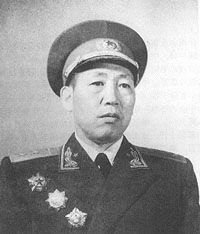
Wang Bingzhang was a Chinese Communist revolutionary and a founding lieutenant general of the People's Liberation Army (PLA). He joined the Northwest Army of the warlord Feng Yuxiang in 1929, before participating in the Ningdu uprising and defecting to the Communist Red Army in 1931. He fought in the Red Army's Long March, the Second Sino-Japanese War where he was credited with devising a trench warfare tactic that helped destroy enemy pillboxes, and the Chinese Civil War.



